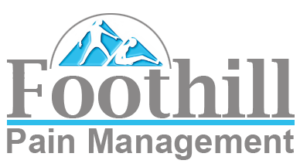Spinal Stenosis
A narrow spinal column can place pressure on nerves that run down your back and into other regions, like your arms and legs. If you have spinal stenosis, Christopher Charbonnet, MD, and his team can diagnose and treat your condition at Foothill Pain Management in Glendale and the Boyle Heights neighborhood of Los Angeles, California. To learn more about spinal stenosis, its causes, and treatments for it, call Foothill Pain Management or book an appointment online today.
Spinal Stenosis Q & A
What is spinal stenosis?
Spinal stenosis occurs when the spaces inside your spine get narrower and start to place pressure on nerves within them. It usually happens because of osteoporosis-related changes in your spine. Over time, wear and tear from osteoporosis can cause bone spurs and other growths to develop and alter the shape of the space within your spine.
You can also develop spinal stenosis because of herniated discs, tumors, thickened ligaments, or acute spinal injuries.
After performing a physical exam with possible diagnostic tests and procedures, your provider at Foothill Pain Management classifies your spinal stenosis according to its location along your spine. The two most common types are cervical stenosis, which originates in your neck, and lumbar stenosis, which originates in your lower back.
What does spinal stenosis feel like?
You might not develop any symptoms from spinal stenosis. If you don’t have symptoms, the only way to diagnose the condition is with magnetic resonance imaging (MRI) or a computed tomography (CT) scan.
Symptoms from spinal stenosis tend to set in slowly and might get worse with time. If you get symptoms, they might include:
- Numbness or tingling in your extremities
- Weakness in your extremities
- Neck pain
- Back pain
- Trouble walking
- Trouble holding your balance
- Pain when you stand or walk for a long time
You should visit Foothill Pain Management for an official diagnosis if you have any of the symptoms associated with spinal stenosis. Your provider can pinpoint the location of your spinal stenosis along your spine and design a treatment plan to address your needs.
What are my treatment options for spinal stenosis?
After a physical exam and an evaluation that might include imaging tests, your provider at Foothill Pain Management determines the best possible course of treatment.
In most cases, they use multiple approaches to help ease your pain and improve your mobility and balance. Your treatment is personalized according to your needs and preferences and might include:
- Epidural steroid injections
- Nonsteroidal anti-inflammatory drugs (NSAIDs)
- Physical therapy
- Home care and lifestyle changes
If these noninvasive treatments don’t relieve the pain from your spinal stenosis, your provider might refer you for surgery. Certain surgical techniques can relieve pressure from the nerves within your spine to reduce your symptoms dramatically.
To find out if you have spinal stenosis and review available treatments, call Foothill Pain Management or book an appointment online today.
